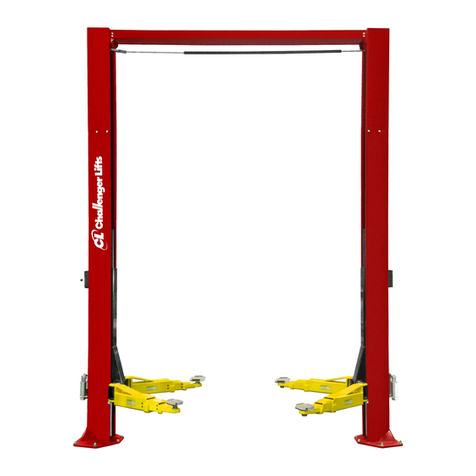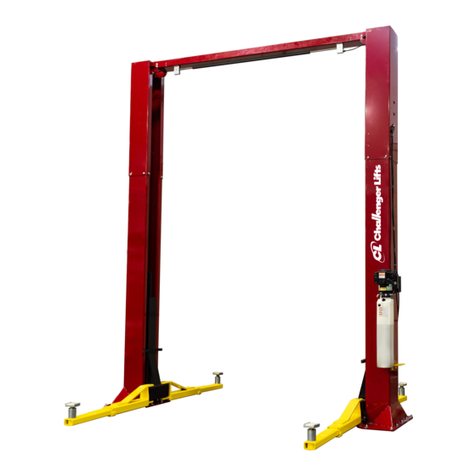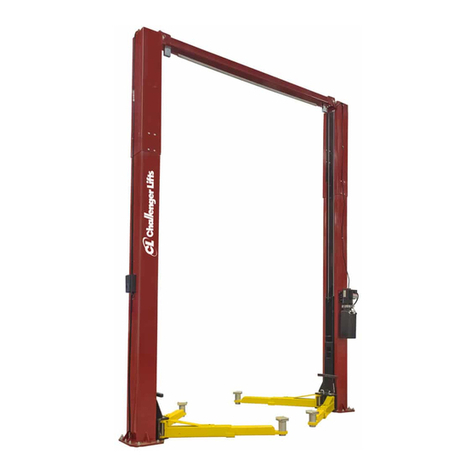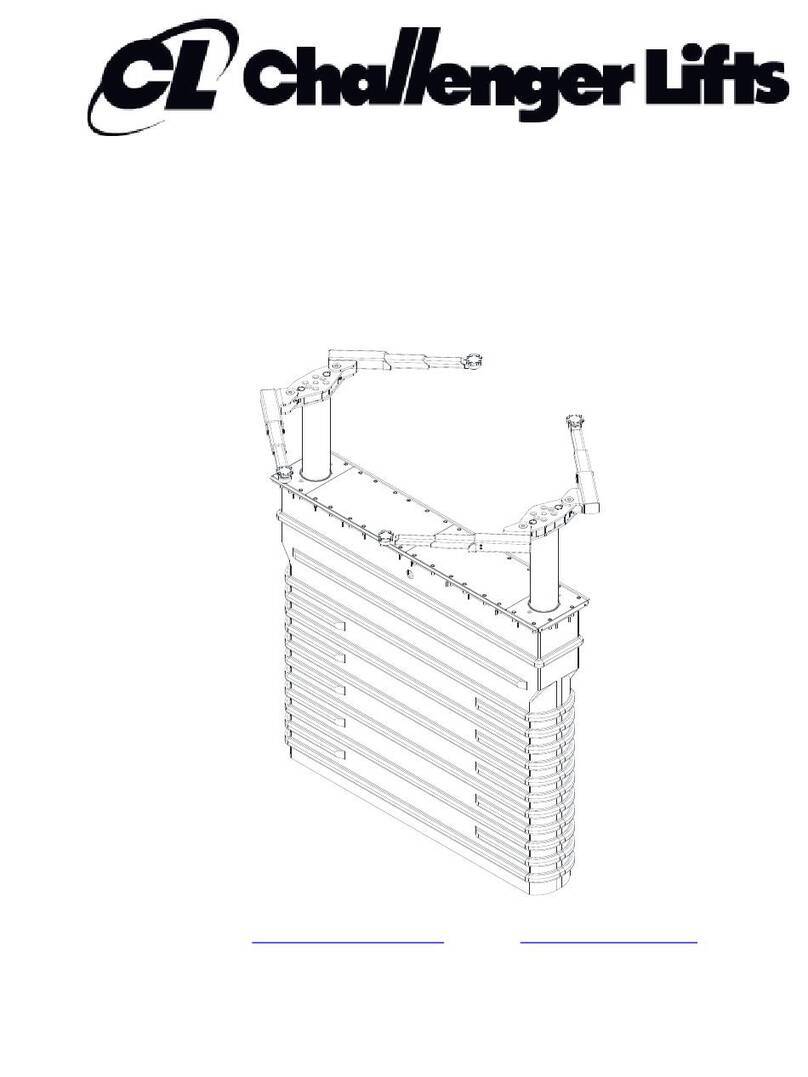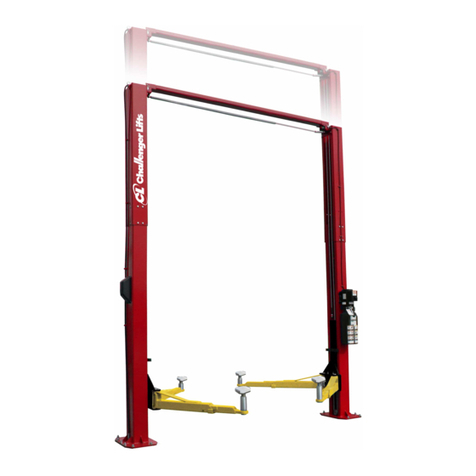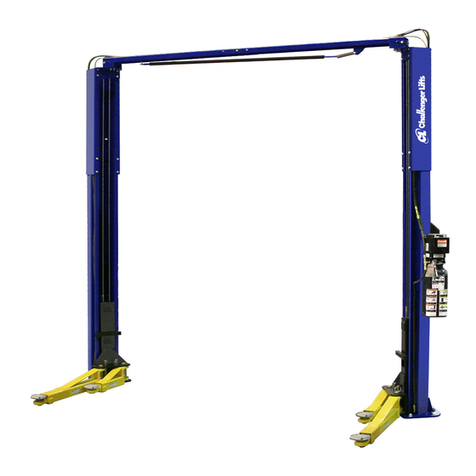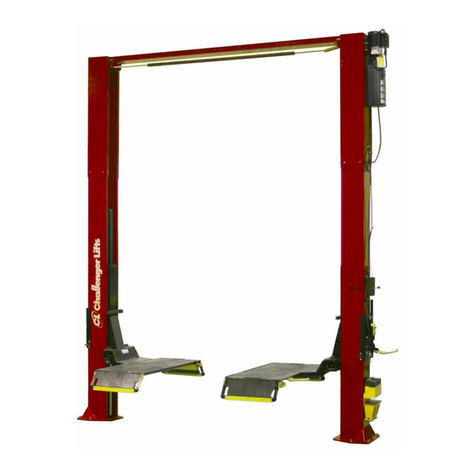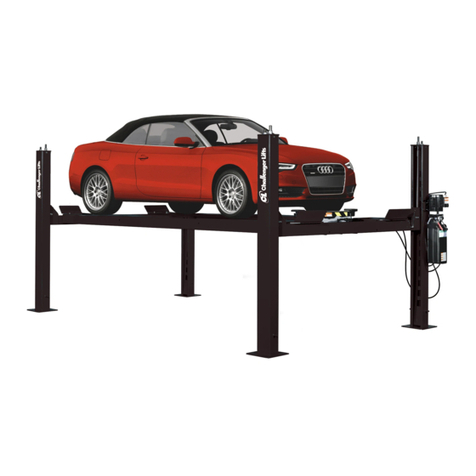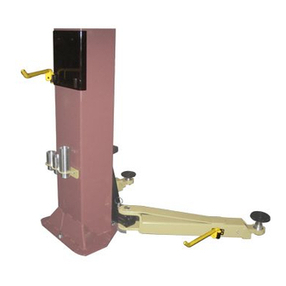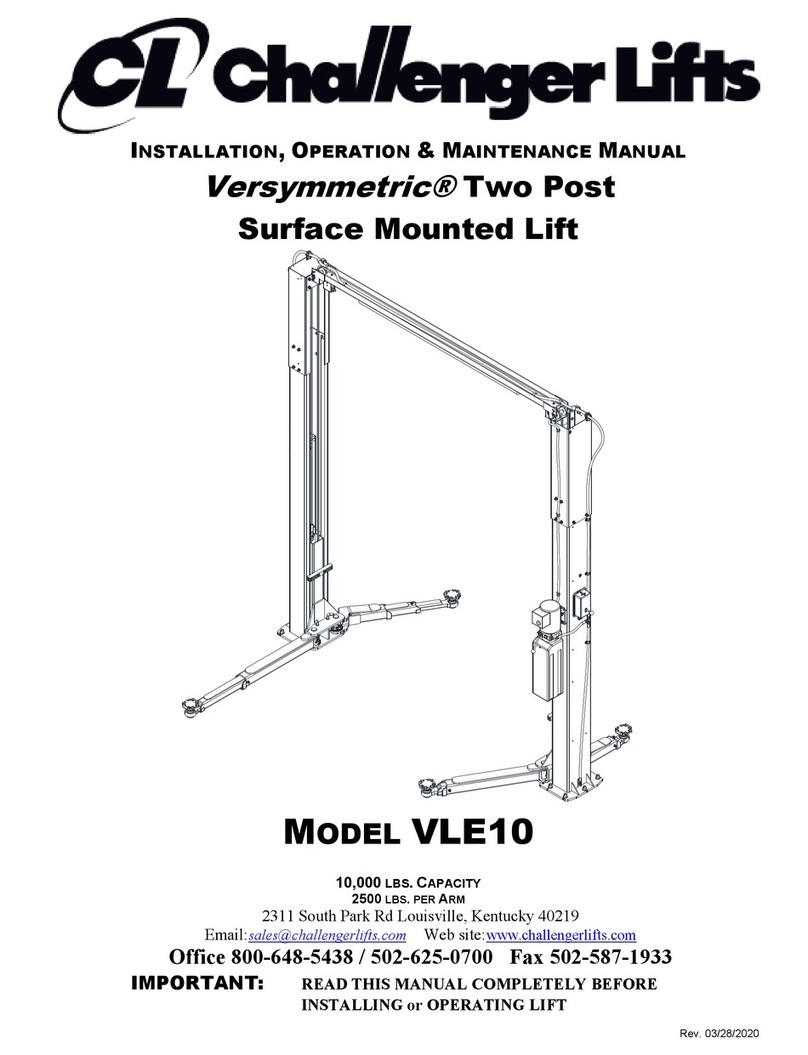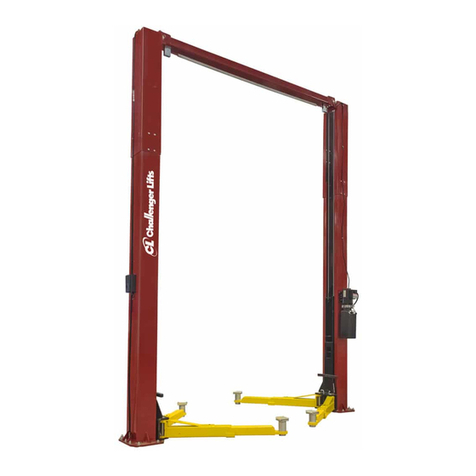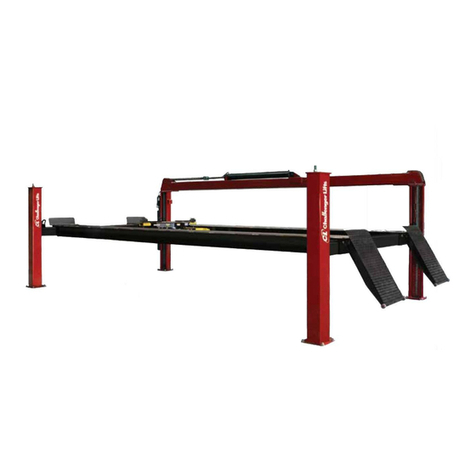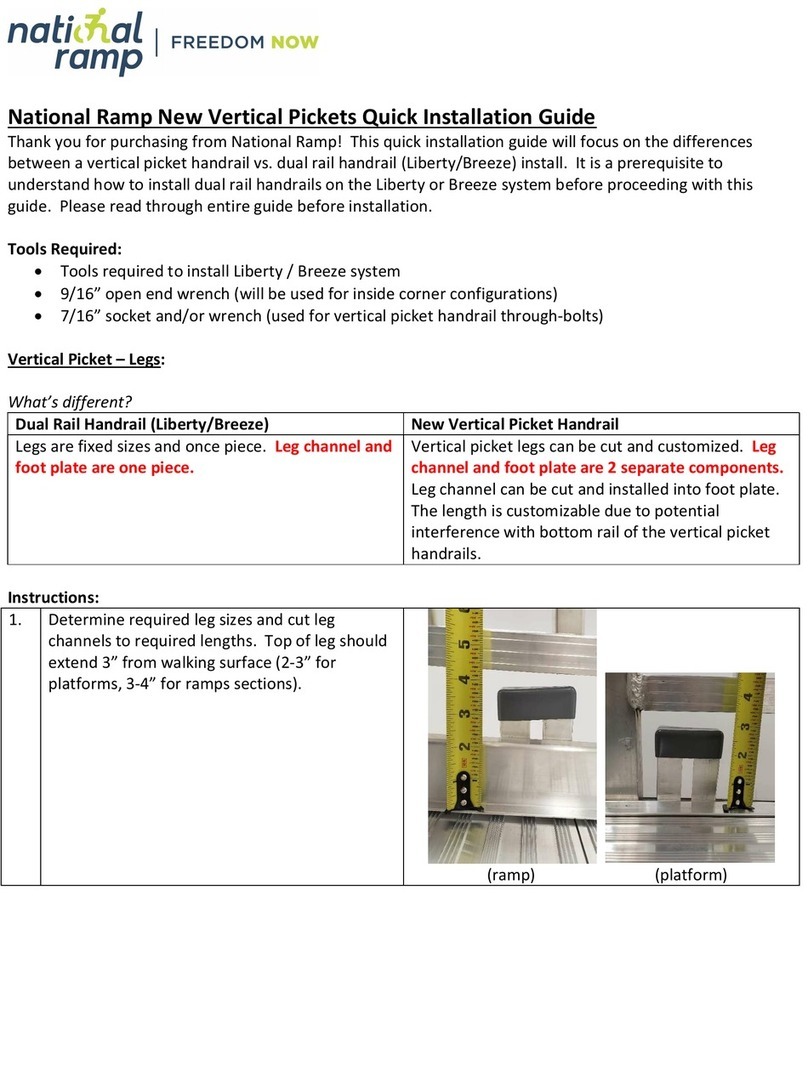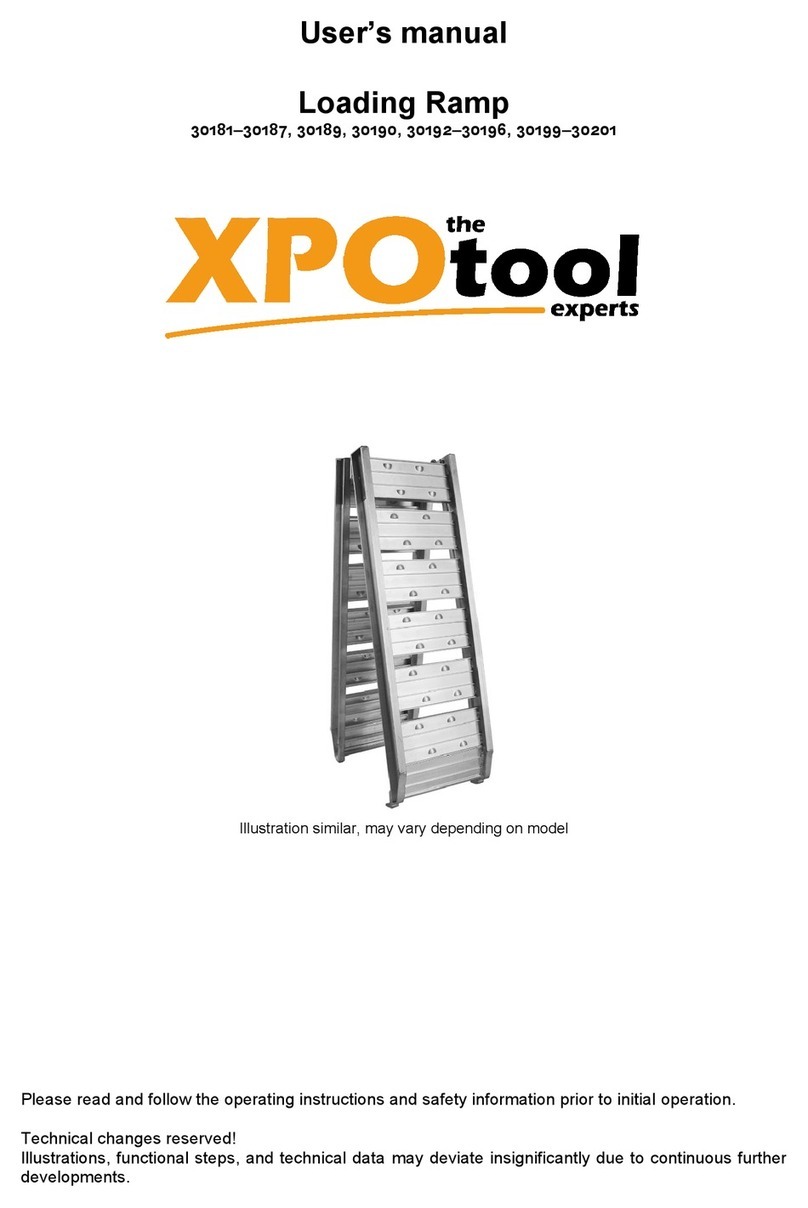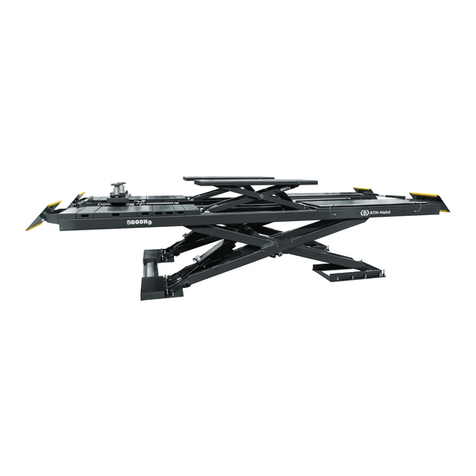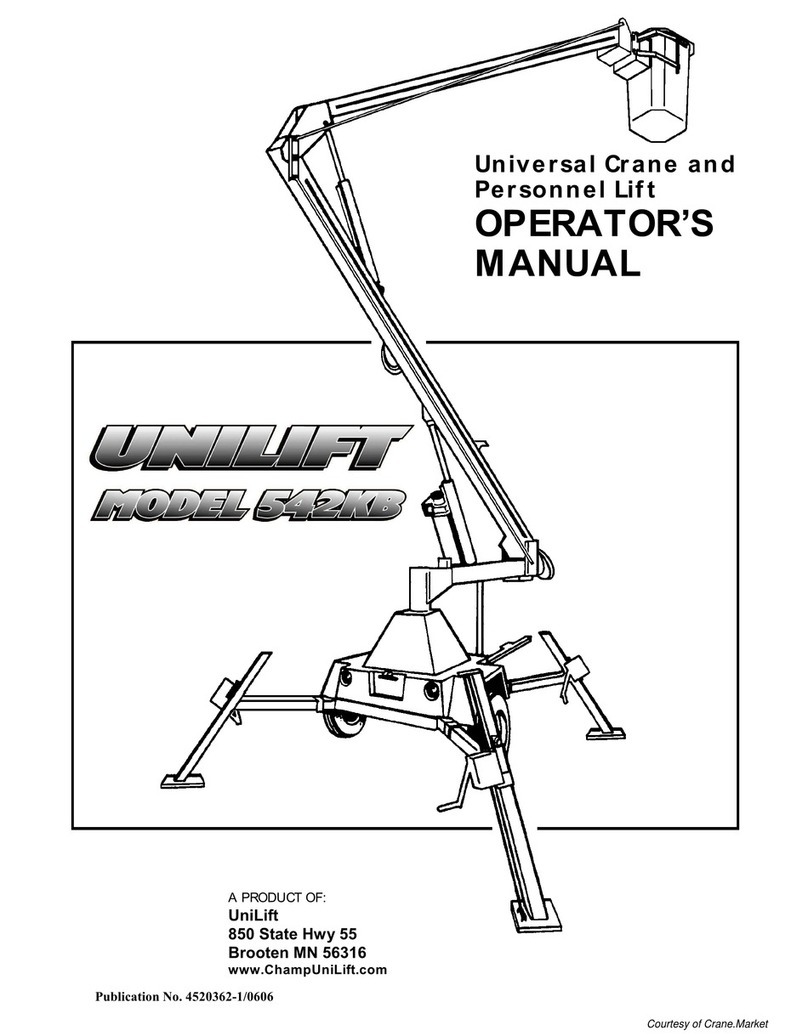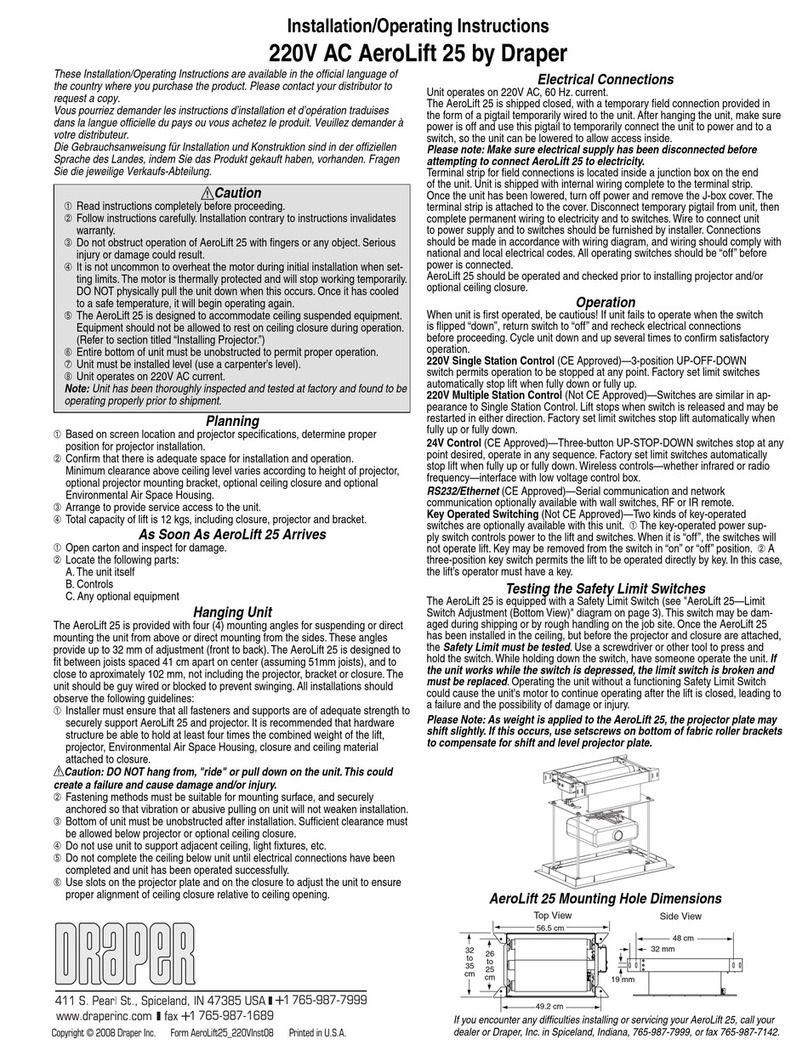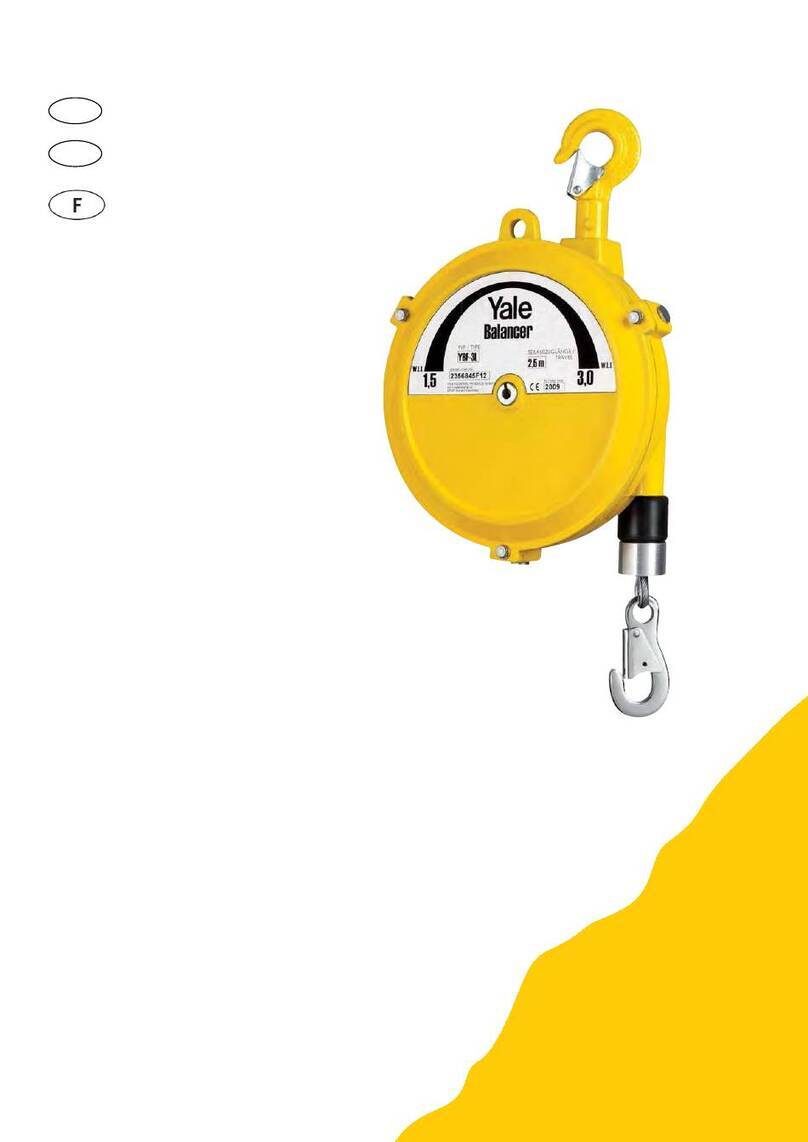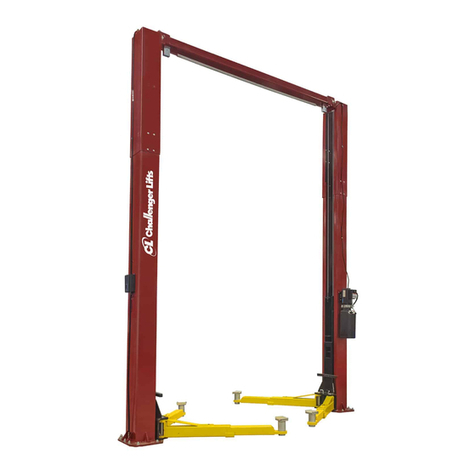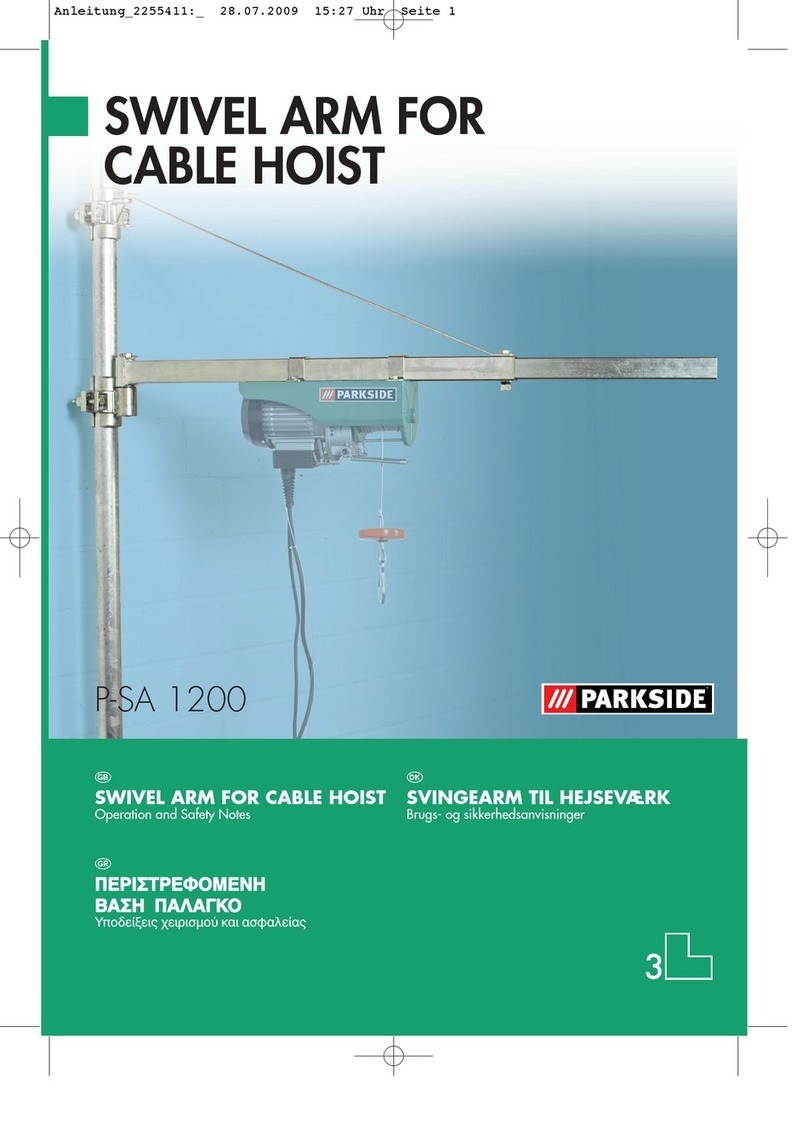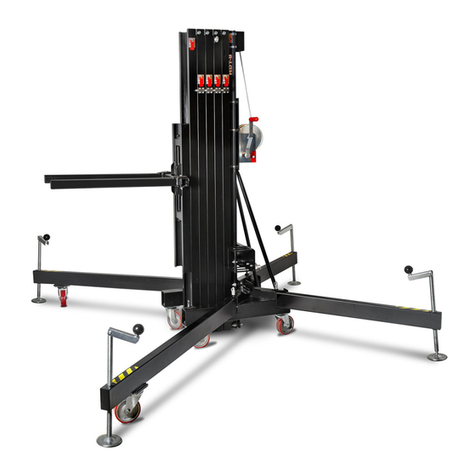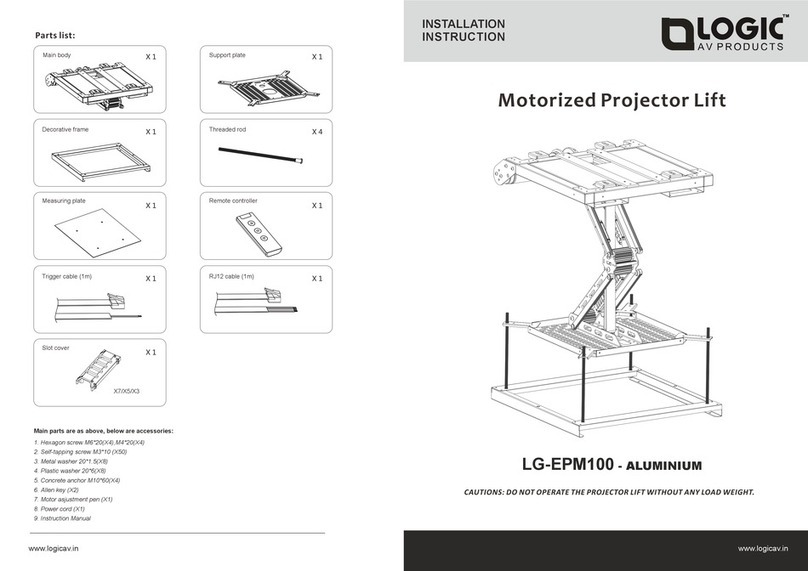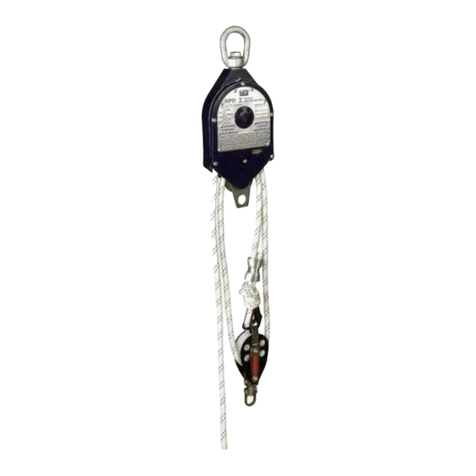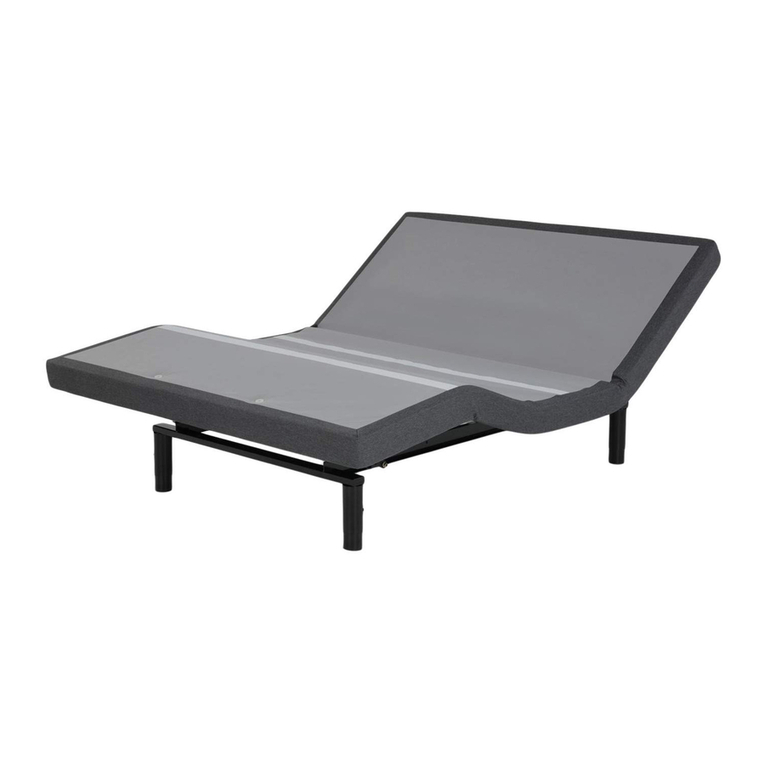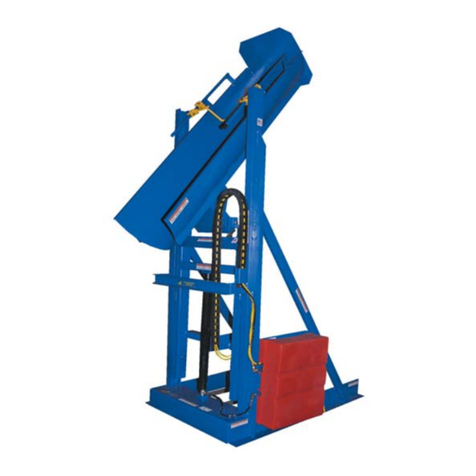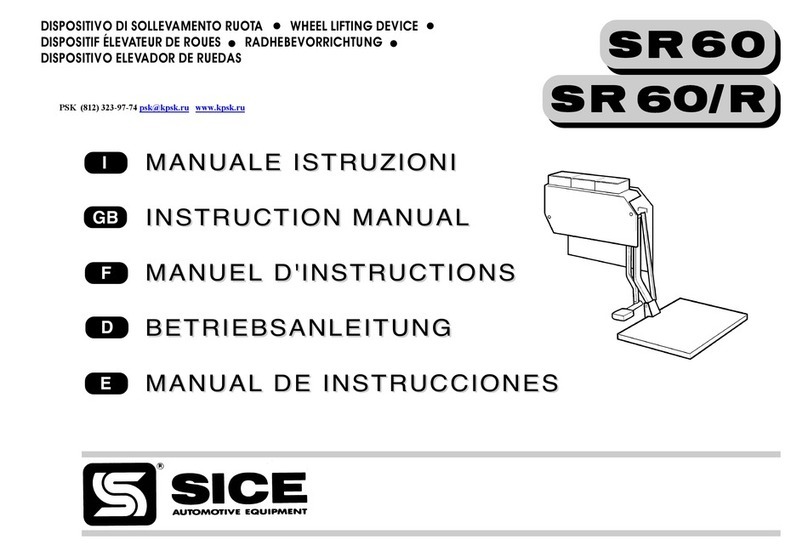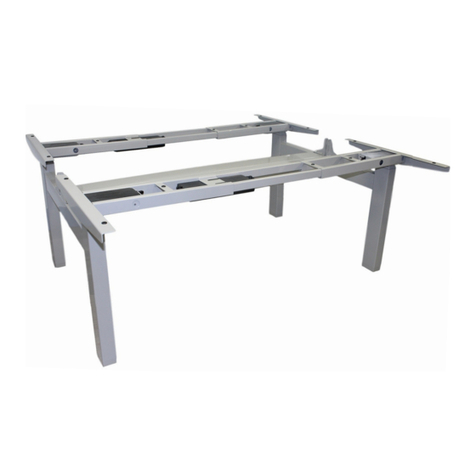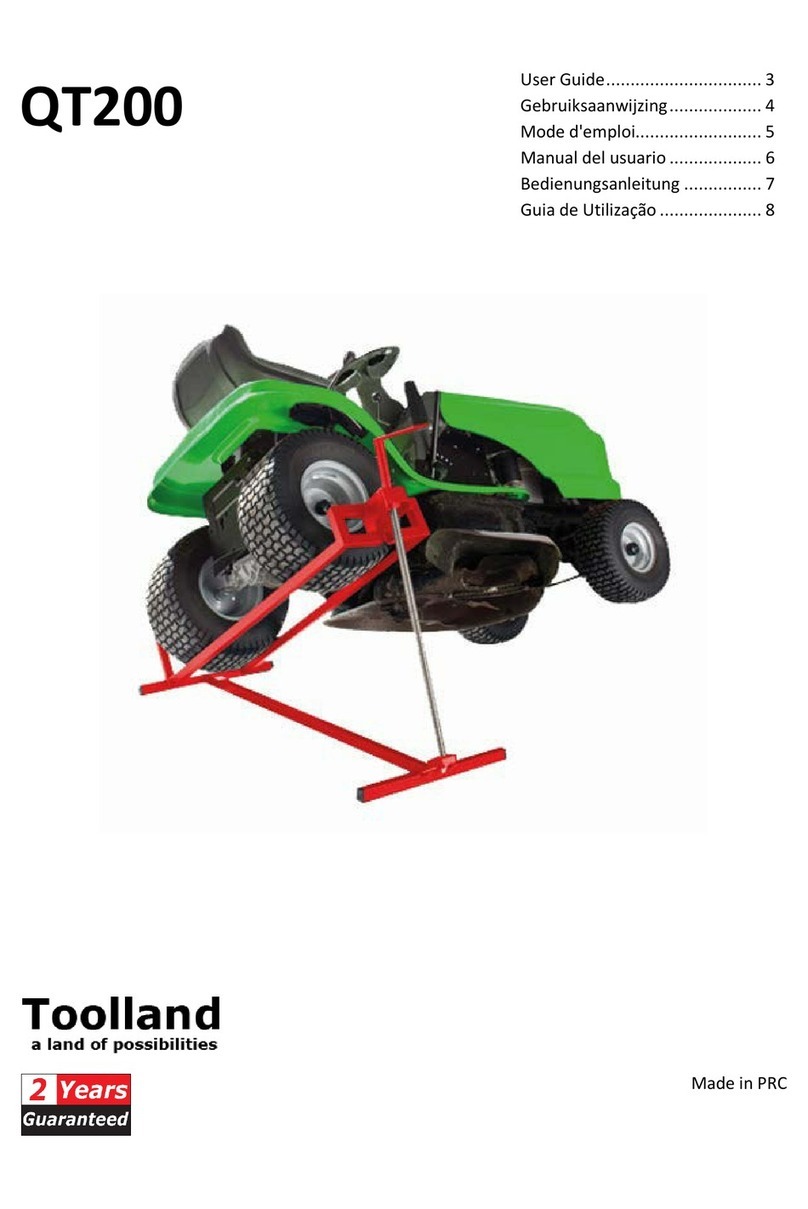
Model CL10 with Dual Pendant Control
Installation, Operation, and Maintenance
Page
16
Rev. 4/22/11
LIFTING A VEHICLE
1) Insure that the lifting arms are parked, out to
full drive thru position.
2) Position the vehicle in the service bay so that
the vehicle’s center of gravity is on a line
between the two columns, and so the vehicle
is centered between the two columns.
DO NOT EXCEED 2500 POUNDS PER ARM.
DO NOT ATTEMPT TO LIFT THE VEHICLE WITH
ONLY TWO ARMS,AS THIS WILL VOID THE
WARRANTY
INSURE THAT THE HIGHEST POINT ON THE
VEHICLE WILL CONTACT THE OVERHEAD LIMIT
SWITCH BAR.
DO NOT PLACE THE VEHICLE IN THE SERVICE BAY
BACKWARDS.
REFER TO THE VEHICLE MANUFACTURERS SERVICE
MANUAL,TECHNICAL BULLETINS,“VEHICLE LIFTING
POINTS GUIDE”(ALI/LP-GUIDE)OR OTHER
PUBLICATIONS TO LOCATE THE RECOMMENDED
LIFTING POINTS.
3) Position the arms and adapters so all four
pads contact the vehicle simultaneously.
The vehicle should remain level during lifting.
4) Raise the lift until all four wheels are off the
ground. Test the stability of the vehicle by
attempting to rock the vehicle. Check adapters
for secure contact with vehicle lift points. If the
vehicle seems unstable, lower the lift and
readjust the arms. If the vehicle is stable,
raise the vehicle to a height a few inches
above the desired working height.
5) Lower the vehicle until the safety latches on
both columns engage. The vehicle should
remain level when both latches are engaged.
If one side engages and the other continues to
descend, stop lowering the vehicle, raise it
several inches, and try again to engage both
latches.
Always lower lift into locks before entering
the area beneath the vehicle.
Always use safety stands when removing or
installing heavy components.
LOWERING A VEHICLE
1) Insure that the area under the vehicle is clear
of personnel and tools.
2) Raise the vehicle until both latches are free.
3) Disengage the latches by pulling down and
holding the lock release lever.
4) Lower the vehicle.
5) Continue to lower the vehicle until the
carriages stop against the base plate. Retract
the extension arms, and park them.
MAINTENANCE
To avoid personal injury, permit only qualified
personnel to perform maintenance on this
equipment. Maintenance personnel should follow
lockout/tagout instructions per ANSI Z244.1.
The following maintenance points are suggested
as the basis of a routine maintenance program.
The actual maintenance program should be
tailored to the installation. See ANSI/ALI ALOIM
booklet for periodic inspection checklist and
maintenance log sheet.
If lift stops short of full rise or chatters, check
fluid level and bleed both cylinders per
Installation Instructions.
Replace all Safety, Warning or Caution Labels
if missing or damaged (See Installation
instructions page 3.)
Daily
Keep lift components clean.
Check for loose or broken parts.
Check hydraulic system for fluid leaks.
Check adapters for damage or excessive wear.
Replace as required with genuine Challenger
Lifts parts.
Check lock release activation. When properly
adjusted, the idler column lock should rest
firmly against the back of the column when
engaged and against the spring mount tab
when disengaged.
Weekly
Check synchronizer cables and sheaves for
wear. Replace as required with genuine
Challenger Lifts parts.
Check lock release cable adjustment per
Installation Instructions step 42.
IMPORTANT: IF IDLER SIDE LOCK PAWL DOES
NOT FULLY DISENGAGE,DAMAGE MAY RESULT
TO IDLER SIDE CARRIAGE AND OR CABLE
SYNCHRONIZING SYSTEM.
Check synchronizer cable tension per
Installation Instructions. Adjust if necessary.
Monthly
Torque concrete anchor bolts to 80 ft-lbs.
Check overhead shutoff switch. While raising
lift, operate overhead shutoff bar. Power Unit
motor should stop when bar is raised.
Lubricate carriage slide tracks with heavy
viscous grease. (Grease all (4) corners of both
columns.)
Visually inspect concrete floor for cracks and/or
spalls within 12” of base plate
If any problems are encountered, contact
your local service representative.
CL10DPC-IOM-A.doc




















